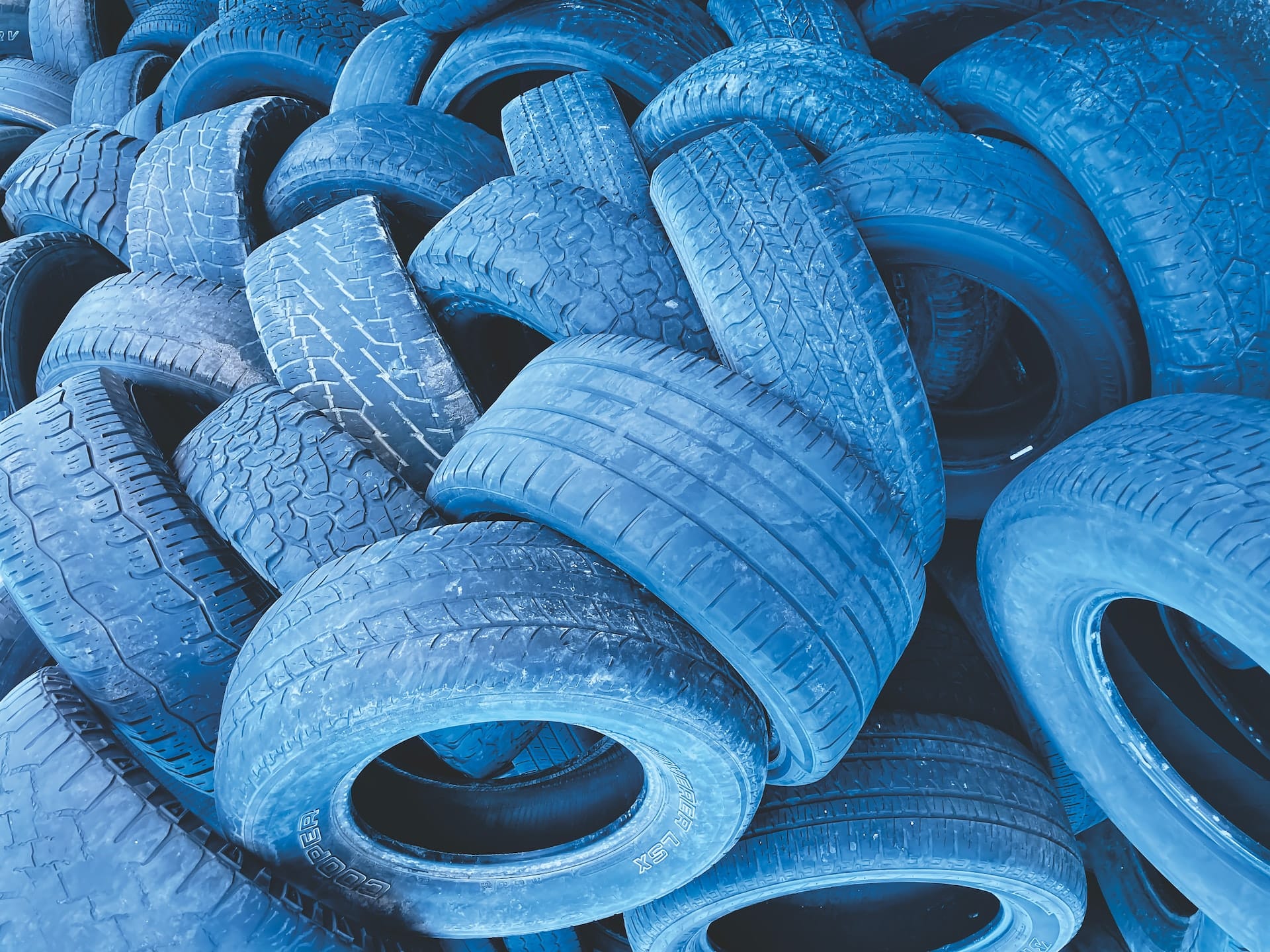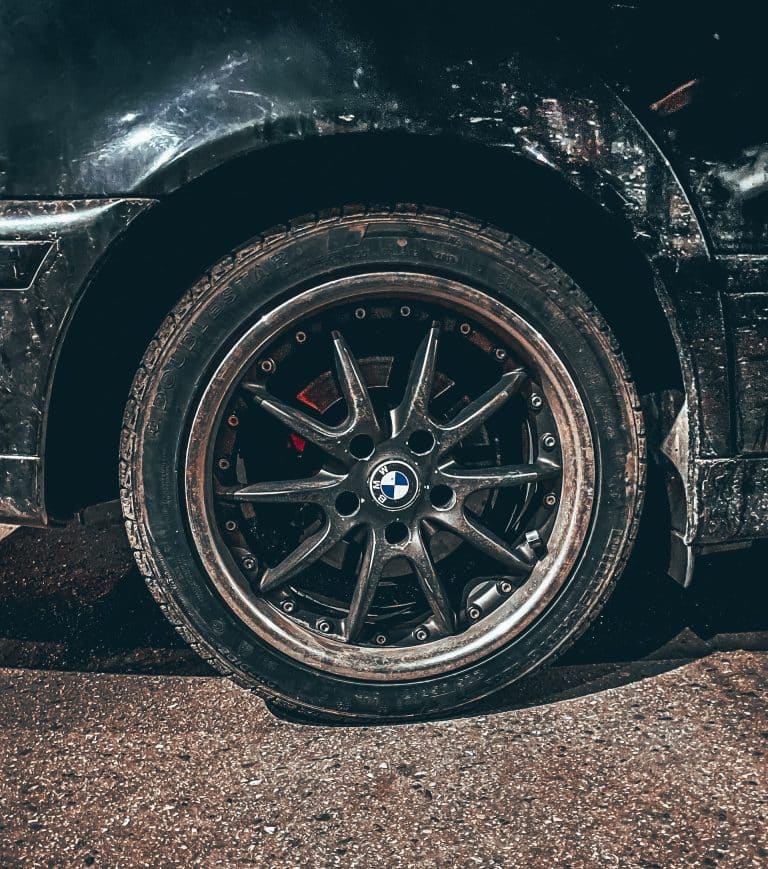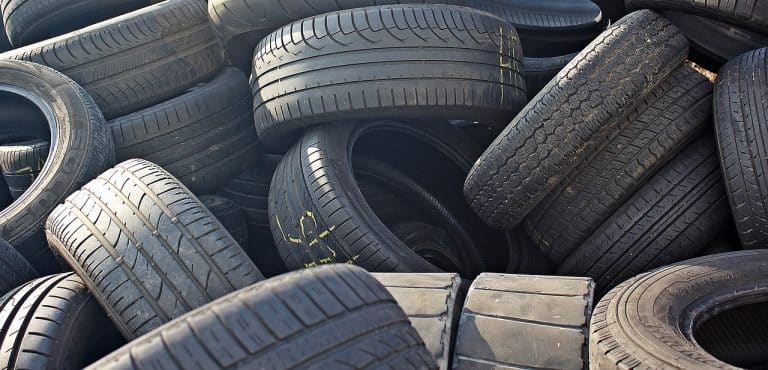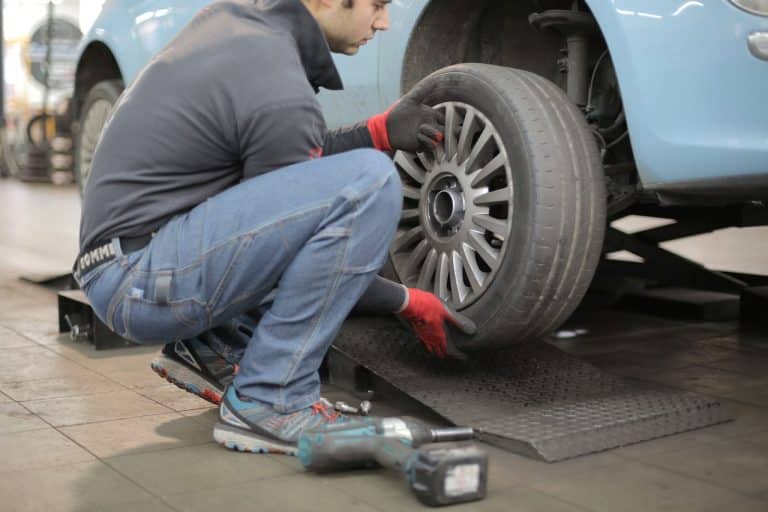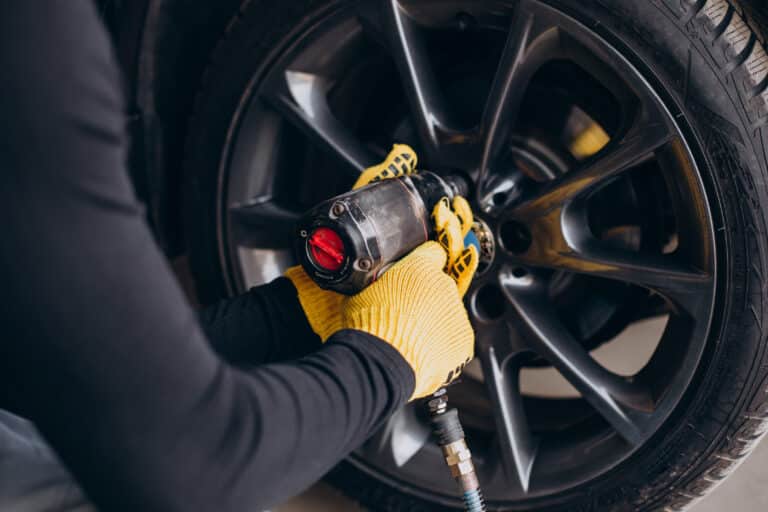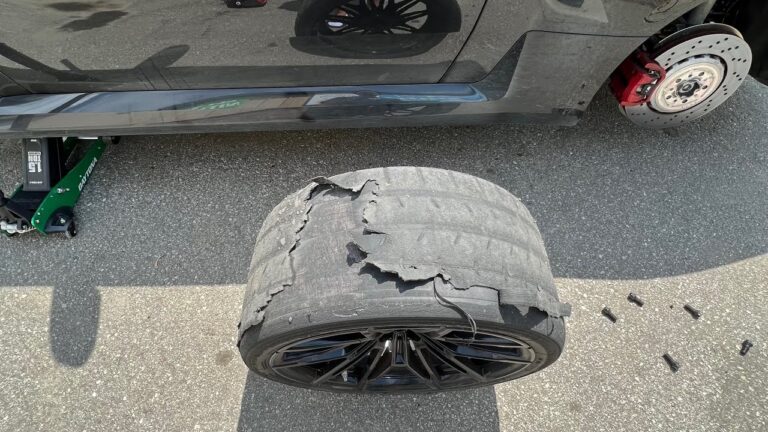All You Need to Know About Uneven Tire Wear
If you’re old enough to know what a car is and how it works, you’re probably aware that some parts that make up the car need to be changed regularly. While some get changed once a year, others can go on for years, but at the end of the day, the change is inevitable. Since this is a website dedicated to tires, you’ve probably guessed by now that today I’ll be talking about tires, again.
There are two reasons why tires need to be replaced –age and wear, and in this guide, I’ll talk about the second part. With each rotation a tire makes on the road, the rubber gets shaved off on a microscopic level, and over billions and trillions of rotations, the tire wears down. This is the process where the height of the blocks reduces, and the tire’s tread depth decreases, leading to a slick tire if you don’t replace it.
Treadwear is a normal sight with any tires, as long as it’s the right type of wear. You’ve seen slicks on a racetrack, and you’re thinking “superior grip,” but you’re wrong. Those are entirely different tires designed to operate as such, while the ones on your minivan are not.
Uneven tire wear is the type that strikes fear in the hearts of car owners and is often overlooked. I’ve seen many people having this issue, so to help them, and potentially you, I’ve made a guide that will explain what it is, how to identify it, and what could be the source of the problem.
What is Uneven Tire Wear?
Uneven tire wear is when the tire wears unevenly across the entire width. It means you’ll see that the tread depth on one side isn’t the same as on the other. You’ll see this on cars with a lot of camber, and it’s normal, as the tire is at an angle. With a standard non-modified tire, uneven wear is something you shouldn’t be seeing.
The worst thing about uneven wear is that there are many reasons why you’re seeing it, so there’s a bit of guessing work to figure out what can be causing it. Some may take their car to a mechanic and get the job done, while others want to get to the bottom of it themselves. If you’re in the second category, keep reading, as I’ll talk about multiple types of uneven wear and what can cause them.
Types of uneven wear and the reasons behind then
Depending on the type of wear, you are looking at different fixes, some of which may cost you a trip to the gas station, while for others, you may need some professional help.
Central Tire Wear
Central tire wear means that the tread depth at the center rib will be less when compared to the one on the shoulders. The cause of this wear is that the tire’s shoulders aren’t making perfect contact with the road like the central part, so they don’t get worn too much. This is a common one and is pretty easy to fix.
In all cases where the central part of the tire wears down quickly, the tire is overinflated. Car tires are designed to work optimally at a specific pressure depending on the load. This is why each manufacturer has a different specification for each model, and sometimes you may notice a difference even between models with different engine options.
Fixing a tire that wears down more in the center is pretty simple. Just go to the nearest gas station with tire pumps and deflate it until you reach the recommended pressure. You can also do that at home if you have the necessary tools.
Edge Tire Wear
Just as you can end up with tire wear down the center of the tire, there’s also the possibility of your tire wearing on the outer sides near the shoulders. In this case, the weight is on the outer sides of the tire while the central one doesn’t get as much of the weight. The principle is the same as before – a tire wears on one side more because there’s more weight there.
The main reason for having outer wear on both sides is that the tire is underinflated. Unlike with an overinflated tire, where only the central part is touching the road, with an underinflated tire, the central part is curved inward. As a result, only the outer edges make contact with the road, thus increasing the wear in those areas.
Solving increased wear on the outer parts of the tire is as simple as solving the central one – adjust the tire pressure. You can go to a gas station or use one of those small tire pumps you have at home and adjust the pressure according to the manufacturer’s specifications.
Edge Tire Wear Only on One Side
Just like you can have tire wear on the outer edges of the contact patch, you may also find that a tire may wear just on one side, the inner or the outer one. This is a bit more serious problem, and you’ll probably need some professional help.
Toe and camber are used to determine the angle of the tires when compared to each other looking from above and the angle they have when compared to the road. Every car is different, and changing this can impact how the car drives. In some cases modifying your car may improve this, but it can also lead to premature tire wear.
With that said, if you haven’t done any modification and still get wear on one side of the tire, then you’ll need an alignment. This is where you take your car to the shop, where the technicians check the parameters and adjust them according to the manufacturer’s specifications.
In most cases, the cause will be solved with a proper alignment, but in some rare instances, you may be looking at something a bit more serious. It’s not too common, but bad ball joints or wheel bearings can also cause uneven tire wear.
An important note here is that if your car is modified, in most cases with negative camber, you should expect to get inner tire wear. This is by design, and unless you plan to return to the stock settings, there’s nothing you can do about it.
Sidewall Wear
You read the heading, and you’re probably thinking, “how can a tire’s sidewall wear when it isn’t touching the road?”. Well, it can, and the cause is driver error in every case.
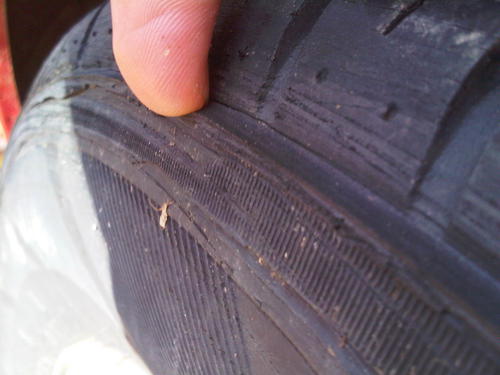
A tire’s sidewall is the part that serves many purposes, but one of the main ones is to keep the shape. Wrapped around the rim, the tire is designed to provide a few inches of rubber to deliver performance and keep the ride smoother as much as possible. A tire’s sidewall won’t be touching the road in typical situations, so you shouldn’t see any wear there. With that said, there are some exceptions.
Most car owners have found themselves in a situation where they need to park next to a curb, which is where the first problem occurs. It’s a good thing to be as close to it as possible, but that can be a problem if you start to rub the tire from it. Doing it once or twice isn’t a problem, and you probably won’t notice any issues. On the other hand, doing it constantly will start to wear the sidewall, which is a problem. The solution to this is to be more cautious and try to leave an inch of space between the curb to avoid further damage.
Another reason why you may see some wear in the sidewall, especially at the shoulders, is aggressive driving. The tire’s sidewall is designed to be stiff, but the sidewall won’t be as stiff as concrete unless you’re running some UHP or racing tire. Touring tires, for example, are designed to be good performers but also well refined, so a softer sidewall will have a softer ride. With that said, the softer sidewall also means that the tire will flex more in the corners.
Under normal driving scenarios, this won’t be a problem, as the tire is designed for that. On the other hand, constantly being aggressive with a tire that isn’t designed for that kind of driving will wear out the shoulders. The only fix for this problem is to be less aggressive. At the end of the day, if that’s how you want to roll, I’d recommend getting a performance-oriented tire.
Cupping Wear
No, it has nothing to do with cups, but it has a lot to do with how the tire wears unevenly. Tire cupping or scalloping is where the wear is randomly located at certain parts of the tire. It’s like looking at flat sports but only on small portions, not the entire width of the tire. In layman’s terms, it looks like your tire’s having smallpox.
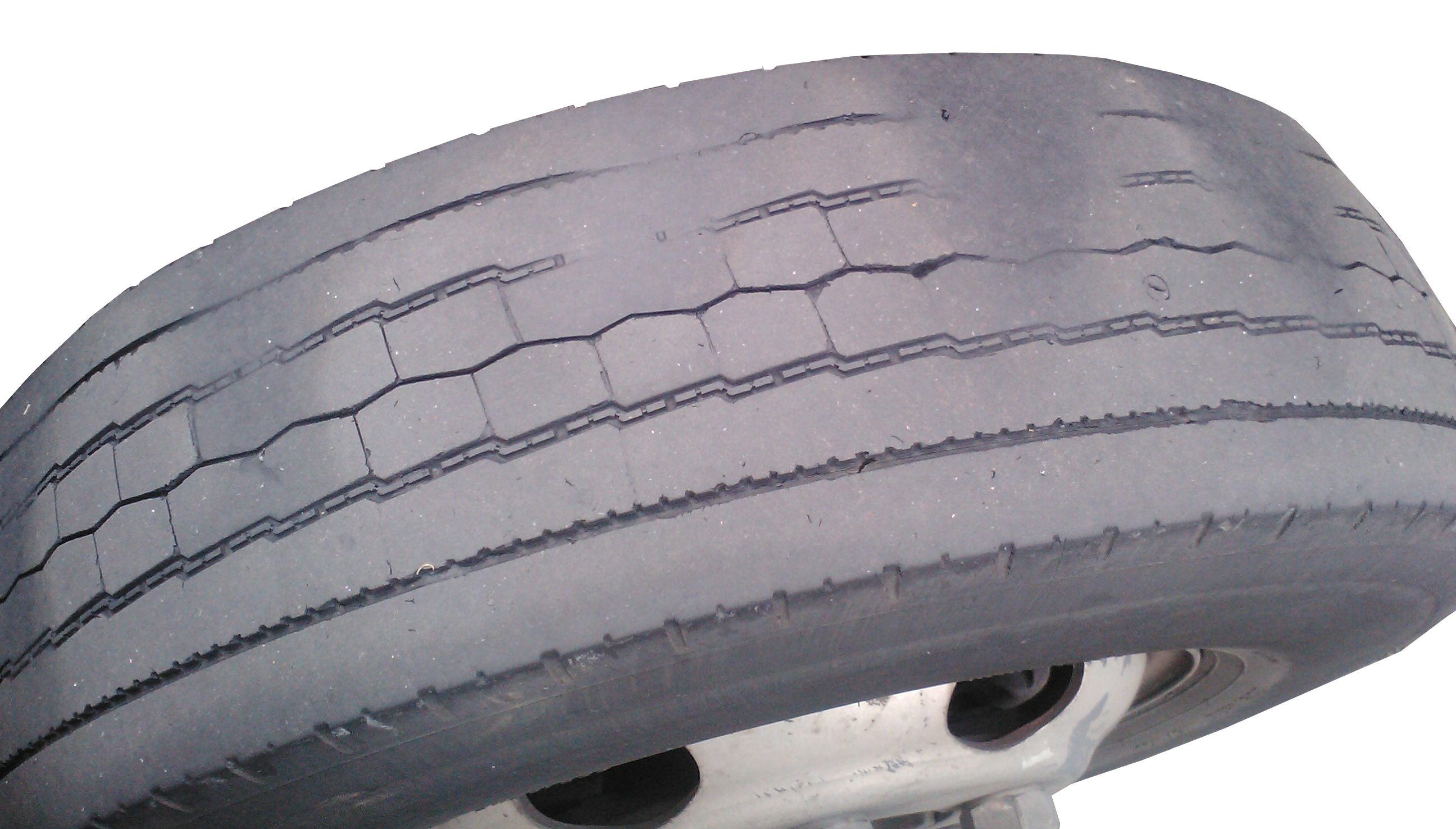
Unlike the several previous types of wear, this one is random, and the spots can be scattered across the entire tire’s contact patch. The bigger problem is that the cause of this can range from minor to more severe and expensive causes.
If you notice this kind of wear, the first thing you can do is take your car to the shop and check the balance of the tires. As balanced as your tires were, dirt may build up and cause the balance to be off. Also, there are some cases where the balancing weights tire shops fit may fall off, which can also be a problem. For the most part, if a tire isn’t balanced properly, you’ll notice more vibrations and shaking, so keep an eye out for that.
Something similar can happen with a bent rim, which is a common sight in places with larger potholes. Even though the tire can absorb some of the impacts, it’s not unheard of a rim bending if you hit a larger hole. The result of this is something similar to an imbalanced tire which can result in cupping. In some cases, you may get away with fixing the rim, which won’t cost you a lot. If the damage is larger, then you’ll need to think about replacing it.
Finally, there’s the suspension, which can also cause cupping wear on your tire. The entire system is designed to keep the tire planted and sticking on the road at all times, thus providing consistent pressure. If some of the components aren’t working properly, you’ll have a bouncy tire, leading to this kind of wear. This can take a while to diagnose and, depending on the problem, can be a costly fix.
Feather Wear
In many ways, feathering is similar to a tire worn on one side, and the problem is the same. With that said, there are some differences in how a tire wears, so it’s essential to know.
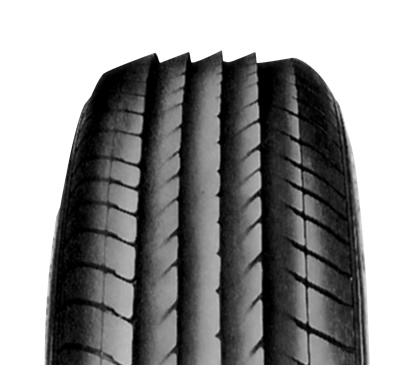
Feather wear is something that you probably won’t be able to see with the naked eye. If you run your hand across the tread and notice diagonal or angled wear on one side, you have an uneven tire wear problem. In some cases, depending on the type of tire and model, you may notice increased road noise.
The cause of the problem is alignment, so a trip to a tire shop will solve it. Also, aggressive driving has been known to cause feathering, so keep that in mind.
A Few Considerations
Now that we’ve covered the basics of uneven tire wear let’s discuss a few things you should know.
I’ll start with the most obvious one, but that’s worth mentioning. A tire that has worn down unevenly is a tire you cannot fix. Sure, you’ll fix the problem that caused it, but at the end of the day, the tire is already “damaged,” and you cannot go around that. If you haven’t picked up the problem sooner, you may need to replace the worn tire.
One of the many recommendations that manufacturers have about tire usage is rotation. As perfect as the conditions of the car may be, some slight uneven wear may be noticed, so rotating them according to the specifications will keep them wearing down as evenly as possible.
You may have noticed that alignment is a common cause of some of the problems, so checking that once a year is a good preventative measure. As long as the alignment is good, you’ll avoid most of the problems associated with it.
Finally, be mindful of your driving habits. I know a few people that don’t bother too much with how they drive or if they hit a pothole or went over a speed bump at a higher speed. All of these things can contribute to uneven wear, not to mention they can damage other components and lead to an unsafe car.
